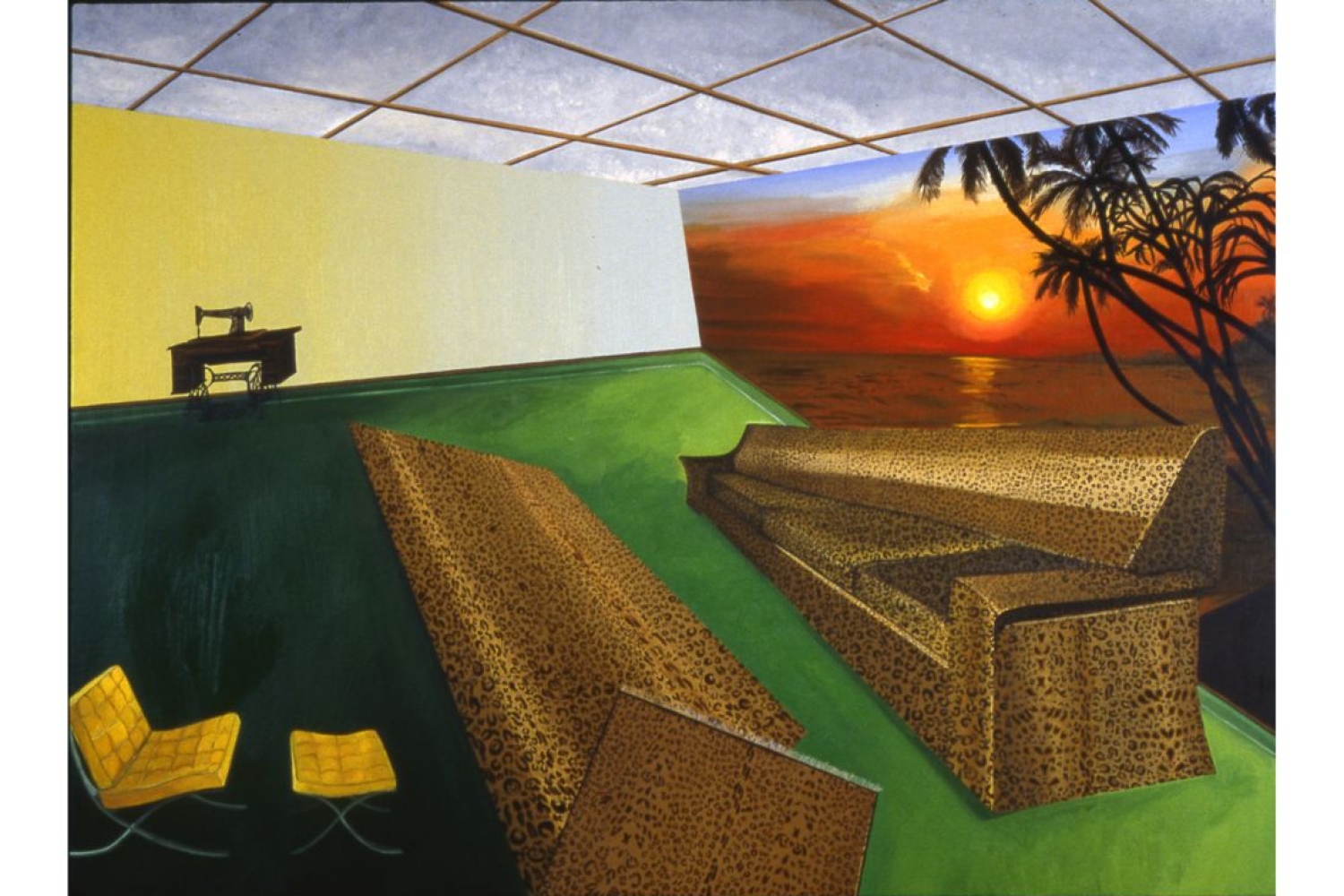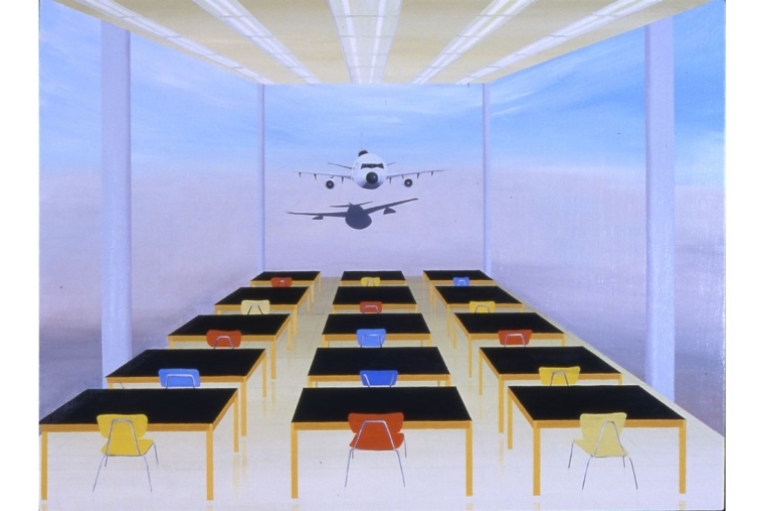

Experimenter presents (Un)Settled, a two-person exhibition by Kanishka Raja and Rathin Barman at Experimenter – Ballygunge Place, Kolkata. The exhibition draws its title from Barman’s monumental sculpture Unsettled Structure, and explores the oscillation between being ‘settled’ and ‘unsettled’, mapping the transitory nature of both interior and exterior, personal and spatial, across time and location.
Kanishka Raja and Rathin Barman made work in disparate geographies, within the context of different spaces and times, yet they have strong converging points of interest. Both have lived their formative years in a land and environment far removed, both physically and aesthetically, from where they practise(d). They have both used their memories and past influences to build a vocabulary of their present concerns. They have also built connections through ethnographic explorations and lived conditions to build a scaffolding to navigate their practice.
Perhaps, apart from all these commonalities, the strongest connection between the two artists is that of migration, of living and making a life and an artistic practice far away from one’s homeland, and through their lived experience, incorporating within them both a point of entry and departure through their personal migratory experiences.
The late Kanishka Raja grew up in Kolkata in a middle-class family to parents steeped in textile design and pattern, where motif, line and form took Raja to many dimensions and colours seeped into much of his thinking. Apart from pattern and colour, many other aspects played a major role in his thinking such as punk rock music, architecture, literature and cinema. The works on view by Raja in (Un)Settled seem to collapse all of these strands together in a series of paintings titled American Paintings, that reveal his voracious imagination as well as the multiverse of his influences. Titles of works such as Highway Star or Lay Down, Stay Down or Five Dolla Fucky Sucky, are packed with innuendo and humour. Whether it is the wallpapers on the walls or the colours and patterns on the carpets and curtains, or the kitsch furniture, all these interior views are a nod to a distinctly 1970’s American lifestyle, yet navigate multiple cultures – trying to make sense of them intellectually or visually. Speaking of his influences on this body of work, Raja stated in an interview published in The Boston Globe in 20051 that he “felt free to dive into the junkyard of every cultural and pop source available.” He further said, “That sensibility of democratising all your sources – high or low-brow, western and eastern, cinema, literature and visual arts – it was a real eye-opening approach.”2 In American Paintings, viewpoints change suddenly and each painting seems to collapse in a particular vertex or a pinch point of view. The influence of video game worlds and unfolding image sequences are also evident, as many works appear like an infinite world of images leading one to another. Raja wants to hold the controls of this game where he “like(s) the way interiors allow you to make experiences, to create a psychological space, to use narrative and conflate public and private and to talk about culture in visual or pictorial ideas.”
While Raja’s paintings offer single point views of the interiors, of mostly domestic spaces – Rathin Barman’s works look at built structures from the outside, in an ever- expanding field of vision. His works, deftly sculpted with materials of construction, look like minimal, reduced planes of flat colours on the surface made with delicately hand-poured concrete. However, their origins are equally convoluted and intricately linked to the history of where they stand and who live in them. Barman uses in-depth interviews, leaning on relationships forged with families who have lived in and occupied old, often dilapidated homes in the North Kolkata, where Barman migrated to, from his village in Tripura over two decades ago. Barman’s personal point of entry into these homes, most of them built over a century or two ago, is akin to the perspective of most migrants in the city – as spaces of awe-inspiring grandeur that have over time lost their majestic relevance over time.
Barman's approach to these spaces and its inhabitants stands at the intersection of architecture and anthropology, as he delves into the stories and memories interspersed within the intricate floor patterns, or the cast iron grille motifs or even how the sunlight transitions through the day within the inner courtyard of the house, casting shadows and highlighting the crevices. The conversations are also often about makeshift tenements and adaptive architectural interventions installed to accommodate an expanding family. What is amply evident from Barman’s interpretations of these interactions is that each of these buildings seem to hold intertwined narratives of history, memory and architecture within them, which were told and retold by their inhabitants, some of whom are either descendants of the rich traders who built these edifices at the nadir of the East India Company’s reign in undivided Bengal or squatters who have adopted and adapted these homes over generations as their own. The fact that none of these historical buildings have clear ownership titles and multiple households often co-share the same spaces with others, indicate that there are multiple historical narratives and personal anecdotes which offer perspectives that are often conflicting yet nevertheless true to that particular lived experience. Barman’s own experience of migrating to Kolkata, of the language he speaks – Sylheti – spoken in the borderlands of Bangladesh and Tripura, the age- old customs practised by his community of tending to their own dwellings and the memories of the home he grew up in, form the backdrop to which he adds layers of history contained within these spaces in the city.

Higher Ground by Kanishka Raja
Raja and Barman’s works have no apparent discernable human presence, yet it is very much palpable. Being devoid of human figures makes these paintings and sculptures open to interpretations and closer examinations that are not bound by a narrative arc, but become a visceral exploration of the shifting idea of home, settlement and what it means to be unsettled.
Words Platform Desk
Date 11.04.2024